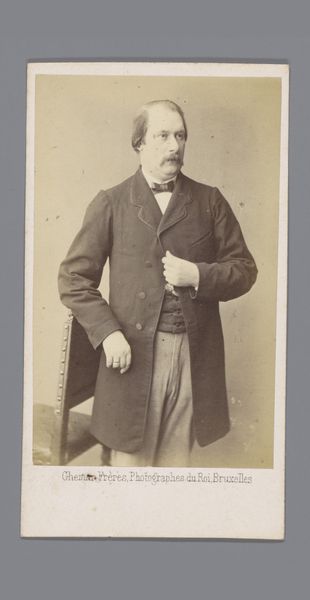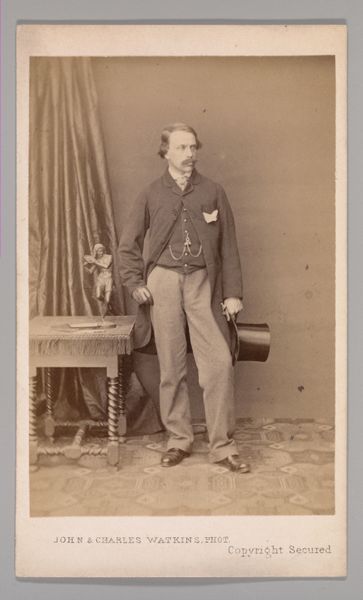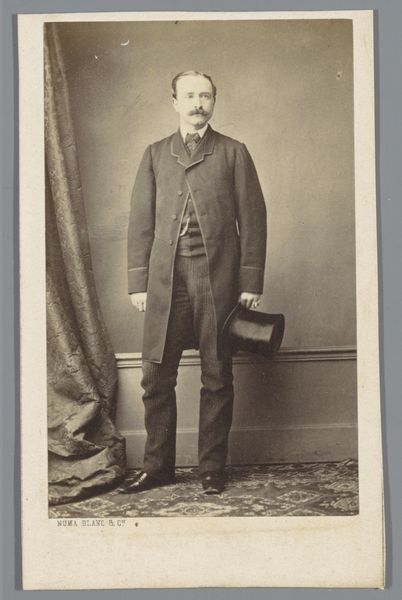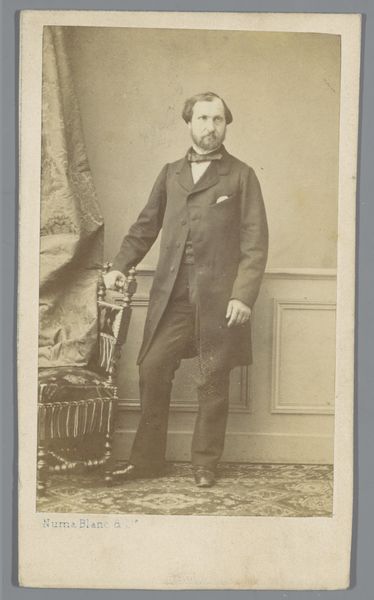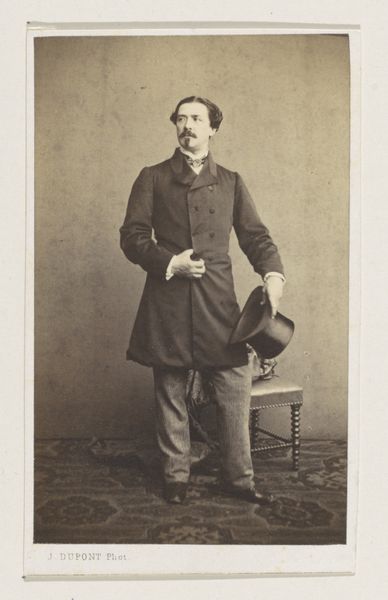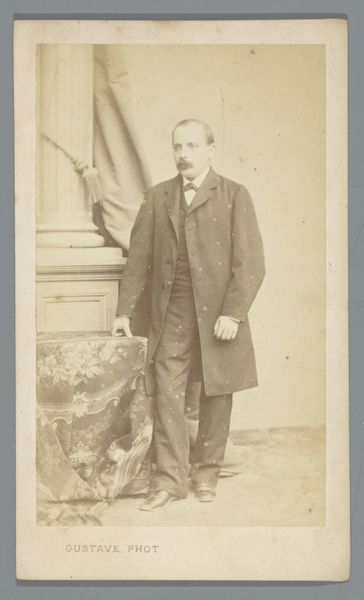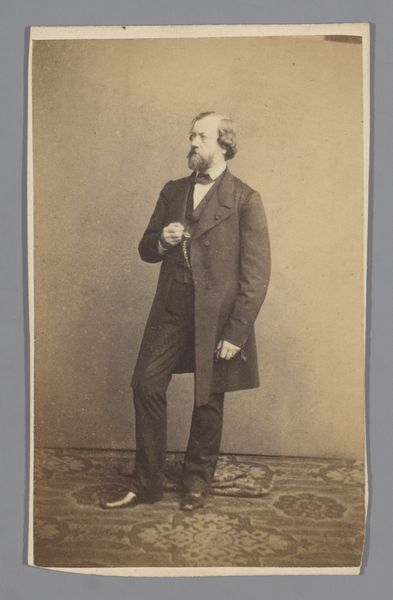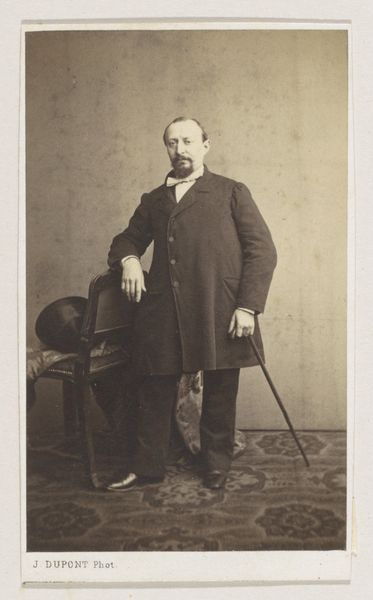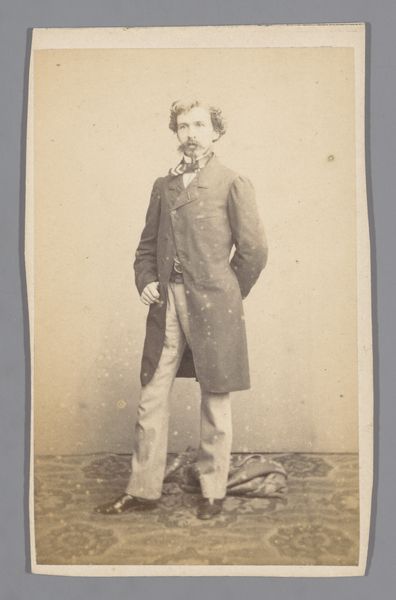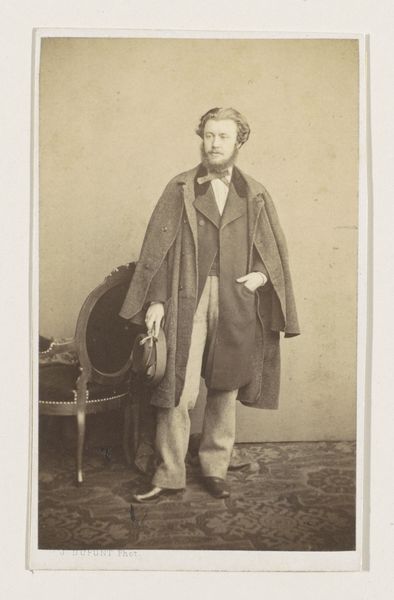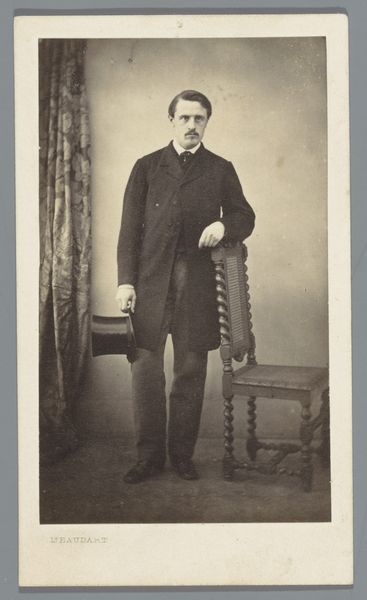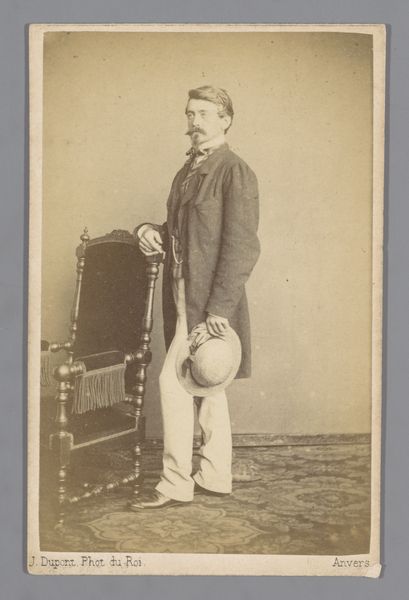
photography, gelatin-silver-print
#
portrait
#
16_19th-century
#
photography
#
gelatin-silver-print
#
realism
Dimensions: height 103 mm, width 63 mm
Copyright: Rijks Museum: Open Domain
Curator: This is an arresting gelatin silver print from between 1865 and 1866. It's entitled "Portret van een onbekende man bij een stoel"—"Portrait of an Unknown Man with a Chair"—and it's the work of Jules Géruzet. Editor: He has a melancholic presence; there is some quiet gravity about him, doesn't he? His dark double-breasted coat and bow tie, paired with lighter-colored pants, suggest a sort of understated formality that might be typical of its time. Curator: I think you're onto something. The conventions of portrait photography in that era were deeply intertwined with social expectations and representations of class and gender. Middle-class men, especially, were eager to adopt signifiers of status. Look at how his hand rests proprietarily on that chair! Editor: Right! It feels like an emblem of domestic comfort or success—quite different from what it could symbolize today. Beyond pure wealth or societal positioning, I'm drawn to his posture; he's leaning, but somewhat awkwardly so; there is that little uncertainty around who he wants to project he is versus his truth self, right? Curator: That awkwardness speaks volumes about performative masculinity of the period and its constraints! It might have also something to do with photographic practices of the era: subjects sometimes were sitting on contraptions or were expected to remain still during very long exposures. I mean, think of the act of "sitting" for one's photograph; there's always an element of the theatrical to these portraits. What identity is he performing, and why? Is he consciously creating the appearance of "having it all?" Editor: Indeed, there is such rigidity that creates almost a symbolic stiffness of who they could actually have been or are versus who they wanted to represent to others. The chair functions almost as a throne here. Perhaps a reflection of what patriarchy actually did—constrain all of them. Curator: I never thought of it that way but perhaps the photo also represents a changing, newly burgeoning bourgeoise in society that struggled to establish what "manhood" or their place in it even looks like. Very often social progress involves taking awkward steps forward while grappling with conventions. Editor: A fascinating point. It reminds us of how much the symbolic language of images can reveal about social norms and shifts—things rarely said aloud or properly interrogated in the context they occurred. Curator: Precisely. Analyzing images like this is one way we can begin to understand broader intersectional narratives in that epoch of early photography. Editor: An interesting experience, looking at it this way. Thanks!
Comments
No comments
Be the first to comment and join the conversation on the ultimate creative platform.
